Eight reasons why Portugal should be your top pick this summer
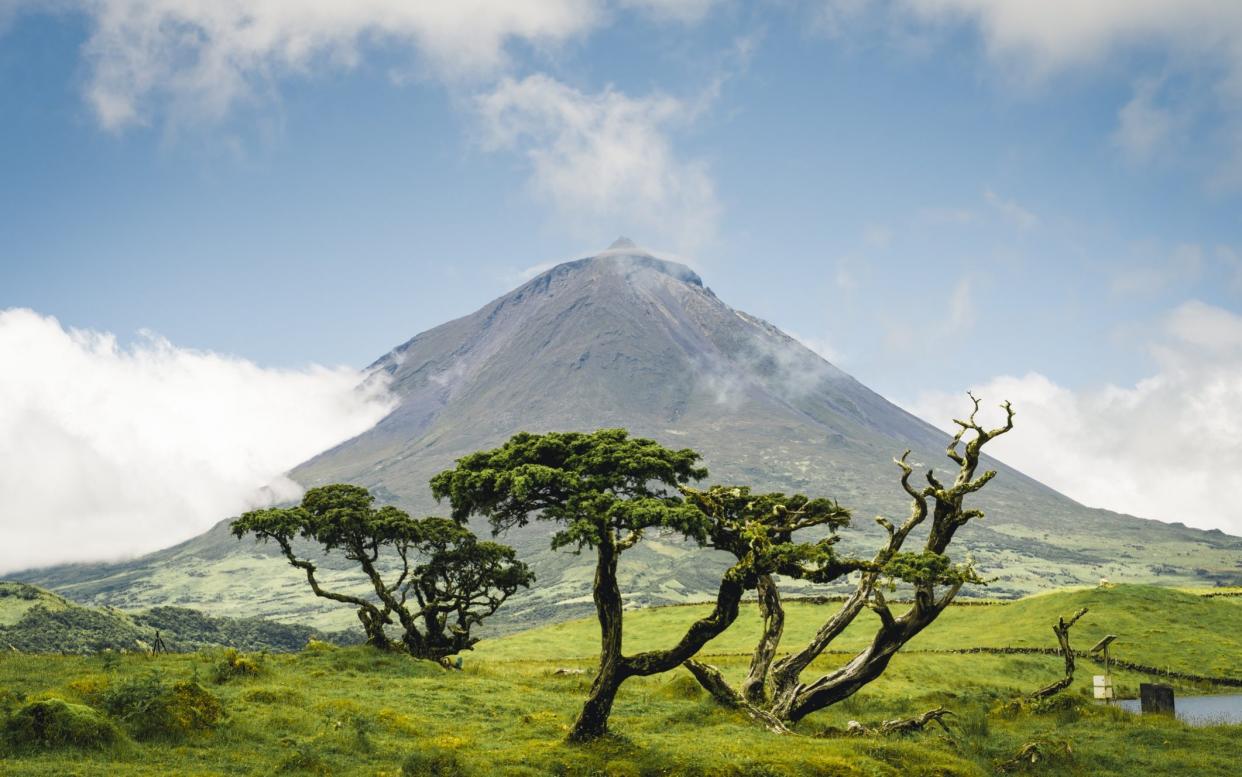
The Portuguese tourist office has a campaign called “You can’t skip Portugal” but actually that is exactly what many have had to do during this pandemic. Portugal has been repeatedly – and rather unfairly – taken off travel corridors or put on red lists. Indeed, when discussing transparency in numbers last summer, one Lisbon local joked to me that “the Spanish have proved once again they are more intelligent than the Portuguese – for they of course have hardly any Covid cases”.
The constant change in Portugal’s status ensured that the normal flood of British visitors (usually well over 2.5 million per year) slowed to a determined trickle of those who were willing and able to pay a price for their few weeks of sunshine, a sea breeze and fresh seafood; that price being submitting to a few weeks of incarceration under a grey sky afterwards. At least they had their memories to keep them warm. But now – finally – the coast is clear for Portugal to be enjoyed with relatively little fear of punishment waiting at home. The country’s vaccine rollout, while slow compared with the UK, is one of the fastest in Europe and, at the time of going to print, it has one of Europe’s lowest infection rates.
The country should, of course, have taken a leaf out of Greece’s book – or (again) Spain’s – by positioning itself aggressively for the British market. Both those countries recently told the British press that they would be “open for British business”, gaining countless future bookings as a result. But that just isn’t the Portuguese way. However, the Portuguese government has confirmed that they will accept vaccinated Britons and those with a negative Covid test when international travel (we hope) becomes possible again on May 17.
Portugal may have been off the traveller’s radar for the best part of a year, but a lot of new projects have been brought to completion during this time. There are recently developed wineries to explore from the north to the south of the country; Aldeia de Cima, in the Alentejo, particularly stands out as a not-to-be-missed experience for the oenophile. Meanwhile, the World of Wine museum launched among the port houses in Porto’s Vila Nova de Gaia, offering visitors an immersion into the country’s wines and grape varieties, and promising a fascinating exhibition of drinking vessels, old and new.
When it comes to food, chef Pedro Pena Bastos opened Cura restaurant in Lisbon, offering a dazzling display of culinary virtuosity – just try his squid tagliatelle with hazelnuts, caviar and a roasted seaweed sauce to see what I mean. A few streets away an old palace, Pálacio Príncipe Real, has been restored and converted into a perfect, pink hotel with the loveliest of gardens. Inset is a generous swimming pool in which to seek respite from the Lisbon heat and a purple jacaranda tree offering shade.
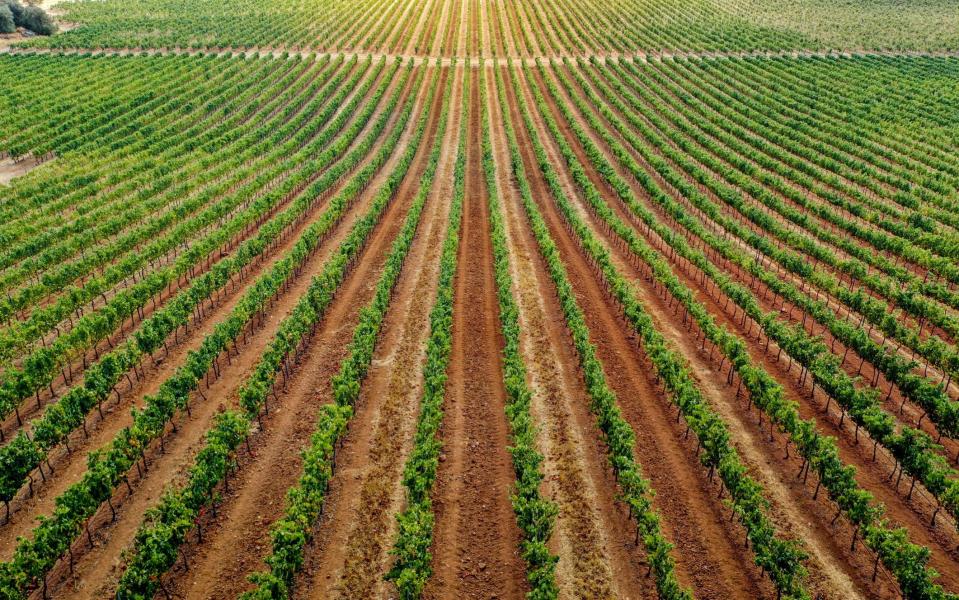
There are so many reasons why this remarkably unspoilt country is ideal for your summer holiday this year.
1. Sun, sea and sand
Portugal is Europe’s answer to the Caribbean in terms of its incredible beaches. In the eastern Algarve, the Atlantic Ocean is at its warmest and gentle waters make it a perfect bucket-and-spade holiday destination for those travelling with small children. Pack a picnic and spend the day on the Praia de Cacela Velha beach, which is really a sandbank washed by the tides of the Ria Formosa. The waters are warm and transparent, and endless lagoons keep children happy searching for starfish.
A stone’s throw from here is Casa Um, the first house from an exciting new group called The Addresses (theaddresses.com). The company is renovating several old buildings in the eastern Algarve, be it a fish warehouse or a shepherd’s hut, and bringing them to the market as rental homes under an umbrella of care. That means a concierge arranges your trip, a chef cooks up a storm for you and a masseuse banishes tension.

If it is variety you are after, indulge in a fly-and-flop holiday at the new W Algarve (whotels.com). Opening this summer, the hotel offers direct access to three different beaches. On the other side of the Algarve, and as you head up the western coast of Portugal, the ocean becomes more fierce, creating ideal conditions for surfing. The popular Praia de Odeceixe, which straddles the border between the Algarve and the Alentejo and where the River Seixe empties out, is a great spot for wave riders, with the pounding tide creating extraordinary patterns in the sand.
The region of Comporta, 90 minutes south of Lisbon, has powder-white beaches, which even in the height of summer remain empty. Enjoy the catch of the day there at chic Sublime Comporta Beach Club, which opened last year on Praia do Carvalhal (sublimecomportabeachclub.pt).
For more ideas on where to stay, see our guides to the best hotels in the Algarve, and the best hotels in Lisbon.
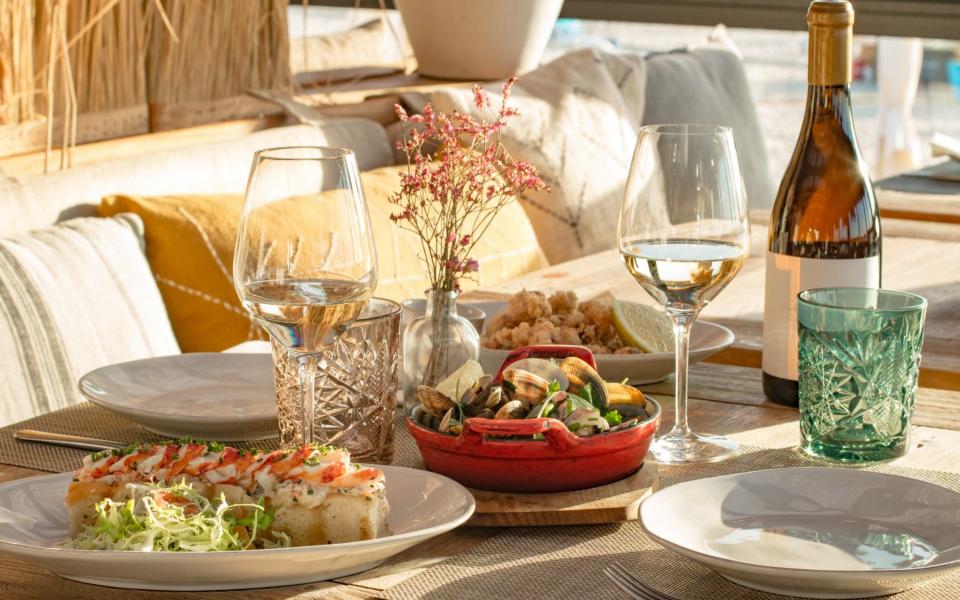
2. Mesmerising waters
Lying on the beach is all very nice, but don’t miss the opportunity to take to the water to see dolphins in the wild. Mar Ilimitado, a small team of marine biologists (00351 916 832 625), operates out of the little harbour of Baleeira near Sagres on the western Algarve. A trip out to sea in their RIB virtually guarantees sightings of the pods of bottlenose dolphins that reside here.
Further north it is vineyards and quintas that you spot as you wind your way through the magnificent terraced Douro Valley aboard a Viking River Cruise (vikingrivercruises.co.uk) with stops to see the riverside towns of Pinhao and Regua. Beginning and ending in Porto and reaching into Spain to visit Salamanca, this cruise carries you along the Douro River in style.

If you prefer to look at, rather than be on, the water, book into the Palacio de Canavezes (campbellgrayhotels.com) which opens as a hotel this spring. Sitting at the edge of the Douro, overlooking the Tamego River, the rich thermal waters beneath it are accessed through the hotel’s spa.
In Portugal’s Alentejo where parched, wide plains are scattered with white-washed medieval villages, one of Europe’s largest man-made lakes, Alqueva, has brought renewed life to the region. Base yourself at Casa na Terra (silentliving.pt). Built beneath the ground by architect Aires Mateus, this property opened just last year and offers lakeside views.
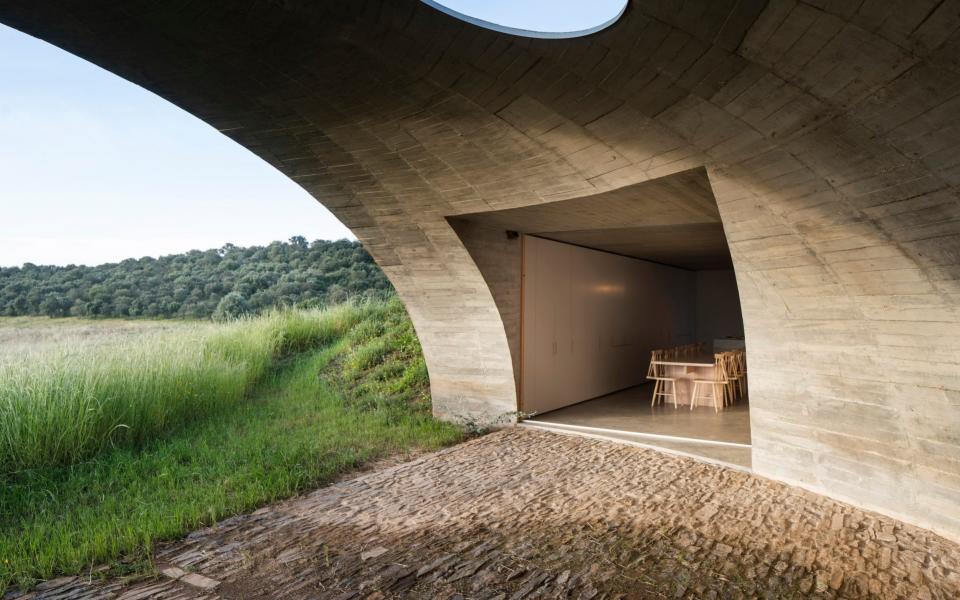
3. The culture fix
Porto has long been famed for its fortified wine, but with the opening of the World of Wine museum (wow.pt) last autumn, you can now also learn about other wines produced in Portugal. Set amid the port houses in the city’s Vila Nova de Gaia district, the museum offers educational wine tasting, an exhibition of historical drinking vessels and an interactive chocolate museum – all under the same roof.
While visiting the museum, be sure to stay in Porto’s gorgeous 19th-century Torel Palace (torelboutiques.com/en). Paying homage to Portugal’s best writers and poets, this is the latest place to have opened in the city’s vibrant hotel scene. A couple of hours south of Porto is the beautiful university town of Coimbra, birthplace of six kings and one-time capital of the country.
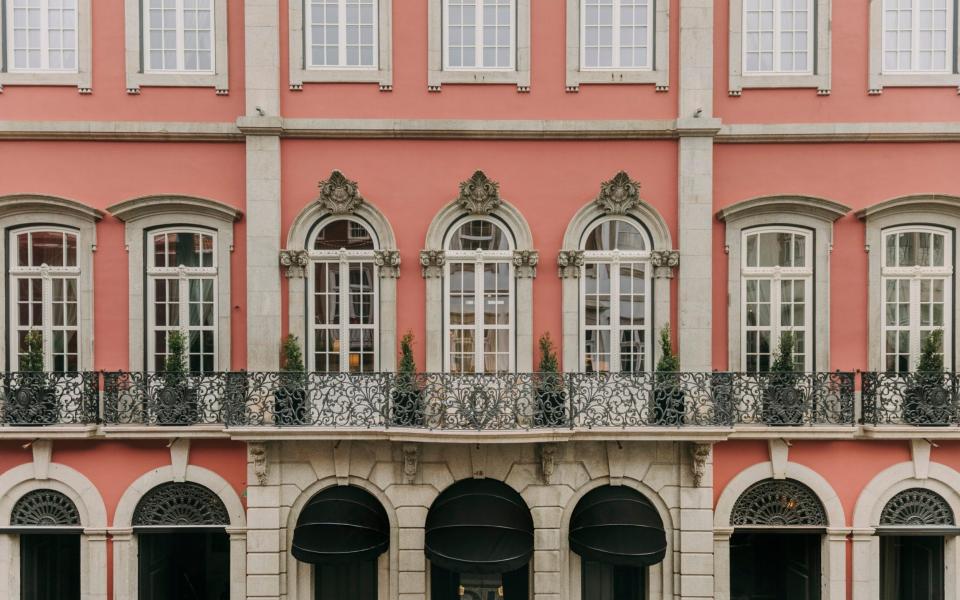
The university is a must-see, particularly its ornate early 18th-century library which houses over 300,000 books. Just next door, the Hastens Sleep Spa (cbrboutiquehotel.com) has based its decorative theme on the University of Coimbra’s Joanina Library. Fifteen rooms with hand-made Hastens beds, a pillow menu and advice from a sleep expert comprise the company’s launch into the hospitality market. Read more on the best hotels in Porto.
A visit to Jerónimos Monastery in Belem is worthwhile – not only for its beautiful Manueline architecture, but to understand the wealth that the Age of Discovery brought to Portugal. Commissioned in 1501 after Vasco da Gama’s return from sailing around the Cape of Good Hope, the monastery was paid for by taxes levied on his cargo of spices, precious stones and gold.
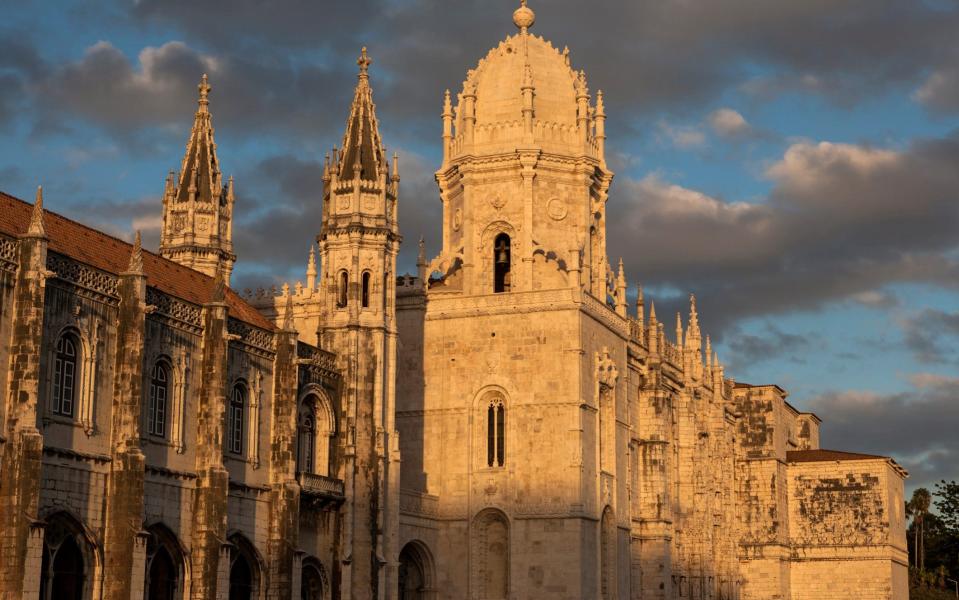
4. Say goodbye to supermarket wines and homemade sandwiches
Wine just keeps getting better in Portugal, as do the wineries, which seem to emanate a new design-driven sleekness. One of the best – in all senses – is Aldeia de Cima (aldeiadecima.com), set among poppy-strewn fields in the Alentejo. Be sure to reserve space in your suitcase on the way home for their delicious wines.
In the same region, Herdade de Malhadinha Nova (malhadinhanova.pt) is a hotel and winery set in several beautifully restored old buildings on a large farm. It opened just last year and is the perfect spot for those seeking to enjoy the authentic Alentejo life – you can ride their fine stable of horses and picnic beneath the olive trees.

Across the water on Pico Island in the Azorean archipelago, the Azores Wine Company (azoreswinecompany.com) also opened last year. The winery is located in the middle of a Unesco World Heritage vineyard site and, this summer, rooms will be added offering views on to the island’s volcanic mountain.
With many of the small food shops closed throughout various lockdowns, farmers’ markets have come into their own in Portugal. Try the new one in Sao Paulo Square every Saturday and stop for a cuttlefish sandwich with spicy lime mayo at the typical Lisbon kiosk in the square.
Alternatively, in the more upmarket Principe Real, the Saturday farmers’ markets are all about organic produce. For a place to stay with flair, the elegant Palacio Principe Real (palacioprincipereal.com) can be found just around the corner, and is poised to swing open its doors to its 28 luxurious rooms this spring.
If you prefer your food on the plate as opposed to in the marketplace, head straight to Cura (fourseasons.com), Lisbon’s latest gastronomic opening in the beautiful Four Seasons Hotel Ritz Lisbon. Here, chef Pedro Pena Bastos delivers his seriously delicious take on Portugal’s cuisine. Drawing on ingredients from the mainland to the Azores he begins with aged Azorean amberjack with seaweed and fermented pepper, before a tiny taco of Minhota beef tartare with oxalis and a sublime squid tagliatelle. The finale is an earthy beetroot-and-fig ice cream served on a bed of reindeer moss atop a fig leaf.
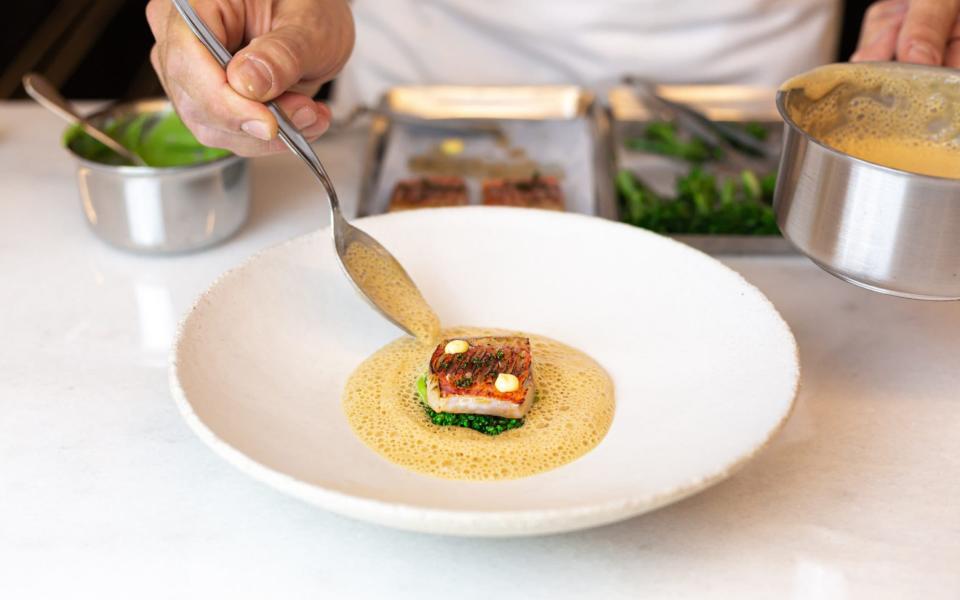
5. Surreal landscapes
Natural parks abound in Portugal, with wildlife, flora and fauna a valued part of the country – although nowhere is nature more revered than on the islands. In sub-tropical Madeira, the Laurisilva forest (whc.unesco.org) existed long before the Portuguese arrived there in 1419. Unesco believes that 90 per cent of the forest is primary, containing a unique set of plants and animals including the endemic Madeiran long-toed pigeon.
Take time to explore the lush island of Madeira – and do not miss the impressive botanical gardens – by staying a few days at the new self-catering property Okulus Madeira (funchalcottages.co.uk), which is built into the mountainside and suspended over the Atlantic. For more ideas on where to stay, see our complete guide to the best hotels in Madeira.

To the north of Madeira, the islands of the Azores are reminiscent of a landscape from The Lord of the Rings. On Sao Miguel Island lies the Sete Cidades (the lagoon of the seven cities). This extraordinary twin lake is set in the crater of a dormant volcano and connected by a narrow strait. One lake is blue, the other green. Legend has it that a green-eyed princess and a blue-eyed shepherd, whose love was forbidden by the princess’s father, the king, shed heartbroken tears that resulted in the different hues.
On the other side of Sao Miguel you can find the hot-water springs famous for cooking the island’s traditional stew (or cozido) of meat, blood sausage and vegetables. Traditionally, the pots are buried underground and the stew cooked for four or five hours in the steam from the hot springs. Those looking for a comprehensive experience of Sao Miguel Island should book on to the new Spotlight on the Azores trip from Cox & Kings (coxandkings.co.uk). The tour includes visits to the geothermal lakes and volcanic craters, gin tasting and tea picking at Europe’s oldest tea plantation.
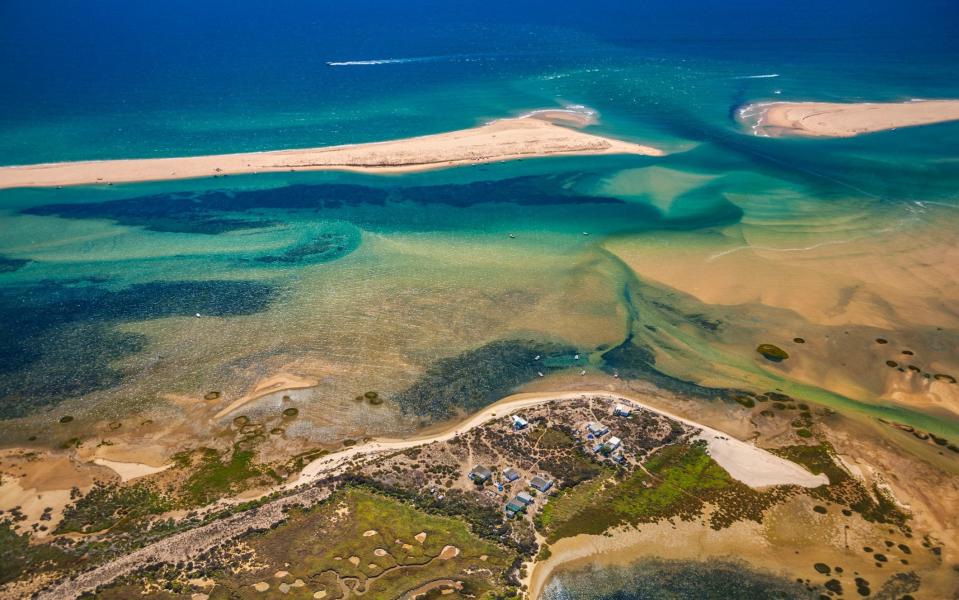
Back on the mainland, the Algarve’s Ria Formosa Natural park (formosamar.com/en) is a protected area which stretches almost 40 miles. This is the home of the increasingly endangered Mediterranean chameleon. With a fast tongue that is almost half as long as its body, this chameleon can change colour to blend into its natural surroundings.
A further highlight of the Ria Formosa are the seahorses. The local population here once accounted for up to 90 per cent of the world’s total, but numbers have seriously decreased over the years. Divided between the long-snouted and short-snouted seahorse, these quirky residents can be seen by snorkelling on the bottom of the marine park.
Parents who want to introduce their children to nature after a year behind four walls should book into Alentejo’s Craveiral Farmhouse (craveiral.pt), a recent addition to Portugal’s rural hotel scene. From helping to pick vegetables in the kitchen garden to meeting the goats and pigs on the farm and riding horses, the outdoor life is the one that is cherished and celebrated here.
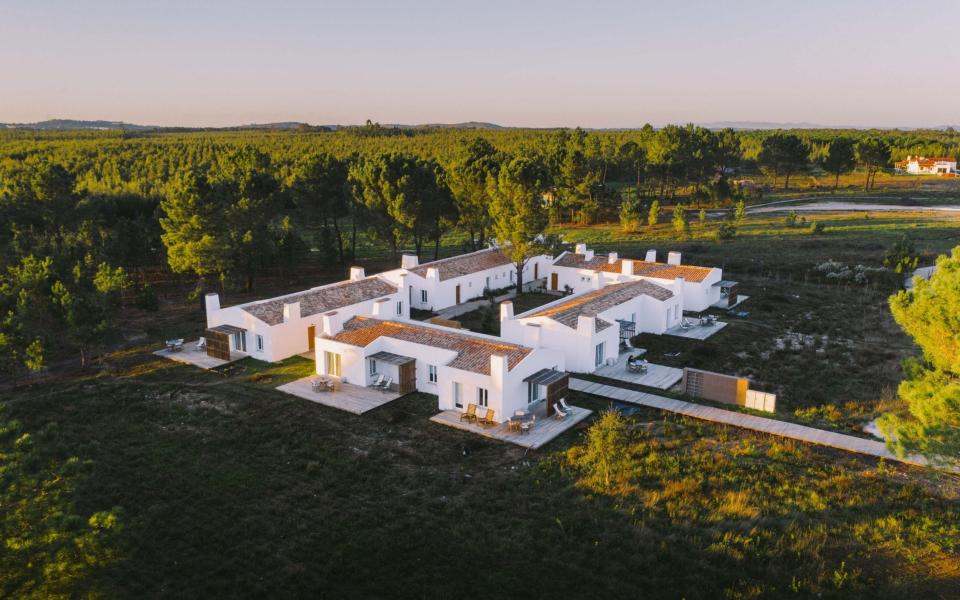
6. There’s more to do than play golf
While many people think of Portugal as being synonymous with golf – and indeed many northern Europeans flock to the Algarve’s many courses in the sunny autumn months – you are far more likely to catch the locals surfing the waves. Ericeira, on the west coast above Lisbon, is considered the surfing capital of Europe with nearby Peniche home to Europe’s most famous barrelling wave. A little further up the coast, Nazare is home to the biggest wave ever surfed (111 feet). This trio of standout locations pulls in the crowds, but there has been a lack of high-end accommodation for downtime – until now.
Step up the sustainable Immerso Hotel (immerso.pt), which will open at the end of June in the one-time fishing village of Ericeira. The hotel promises 37 rooms, a fine-dining restaurant by Alexandre Silva, of the Michelin-starred Loco, and its own surfboard production studio, obviously.
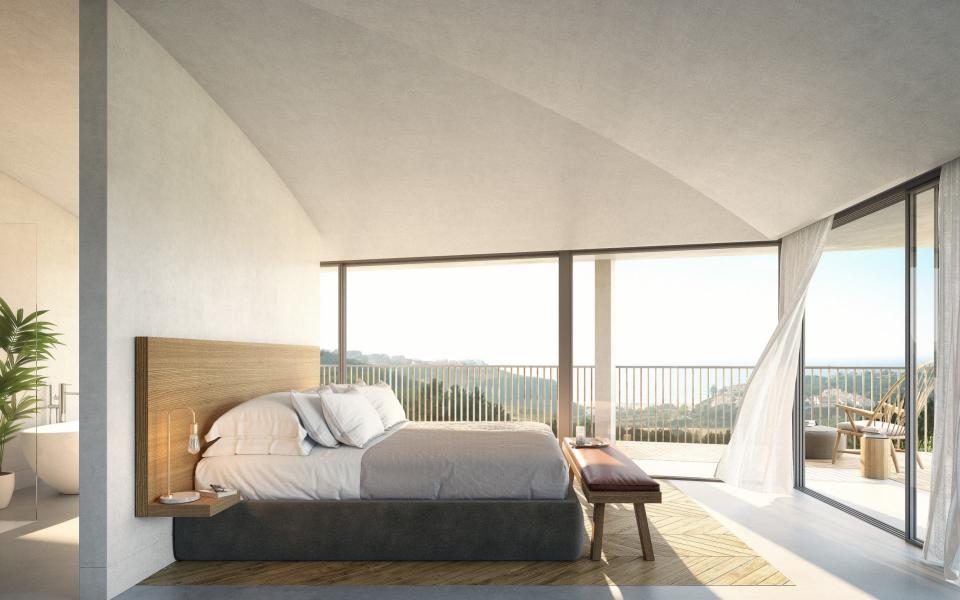
But it is not just watersports that are popular in Portugal. No doubt because of the sunshine, walking holidays proliferate on Portugal’s mainland and its islands. Much has been written about the Vicentina routes which run up the west coast from the Algarve into the Alentejo (rotavicentina.com), but for something a little different, try trekking along Madeira’s levadas (madeiraoceantrails.com). These ancient paths were originally carved out so that water could be carried from the humid parts of the island to the dry. Given that the island is rich with interesting botanical species, the landscape it traverses never gets boring.
Who said active has to mean adrenalin-fuelled? Portugal possesses a fantastic diversity of habitats and consequently a huge number of birds can be spotted across the country, especially with its location on a popular migratory route. What keen birders must first decide is whether your interests lie in wetland birds (such as greater flamingos, purple herons and little bustards) which can all be found in the Sado Estuary Nature Reserve, just 30 minutes from Lisbon, or birds of prey (such as golden and Bonelli’s eagles, griffon vultures and black storks) that can be found over the rolling plains of the Alentejo’s interior and in the north of the country.

Frequent visitors to the Algarve in summer are European bee-eaters, hoopoes and golden orioles. Guided tours are available through Birding in Portugal (birdinginportugal.com).
7. Mountains high
At 7,713 feet above sea level, the highest mountain in Portugal is Mount Pico, which can be found on Pico Island in the Azorean archipelago. This is also the top of the world’s largest mainly underwater mountain range – the mid-Atlantic range. A dormant volcano, Mount Pico is, along with wine and whales, one of the main attractions of the island. Climbing it is considered challenging and is an activity that is best undertaken with a guide (tripixazores.com).
After working up a sweat, stay in Lava Homes (lavahomes.com/pt), a cluster of 14 houses built in 2019 using local stone and cryptomeria wood within view of Mount Pico. Magma, the on-site restaurant, offers traditional island dishes such as octopus in red wine and the much-loved lapas (limpets).
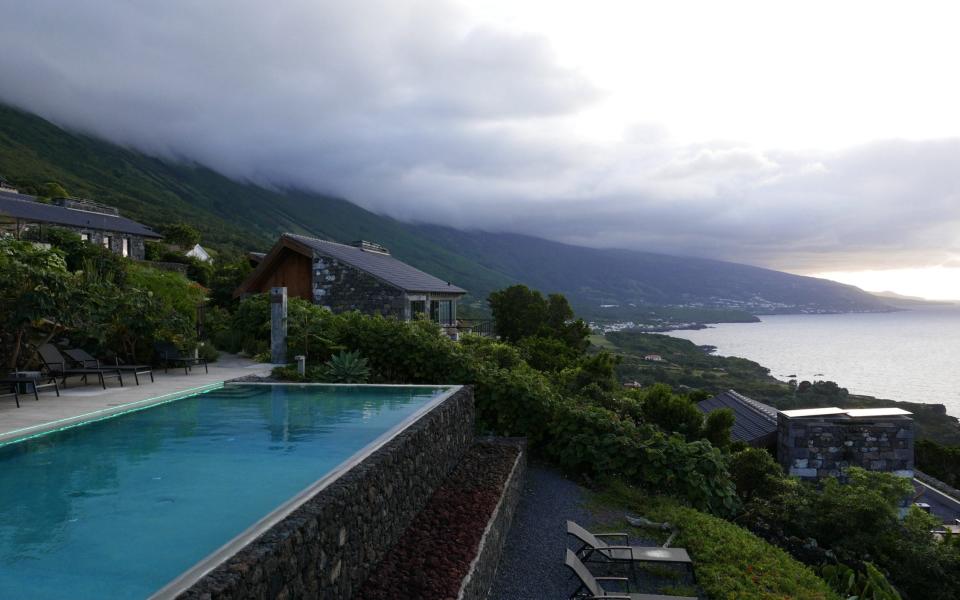
In the north of Portugal you’ll find the highest mountain range, the beautiful Serra da Estrela. Although it has many marked trails for walkers, it is a place where time seems to have stood still, with its impressive glacial valleys offering a deep silence only broken by the sound of the rushing rivers that cut through it and the bells of sheep being herded by the Serra da Estrela dogs. Here the eponymous cheese is still handmade by artisans from the raw milk of the bordaleira sheep, and coagulated using local thistles, rather than rennet, making it suitable for vegetarians. Traditionally bound in cloth, the cheese comes in a circular shape and its creamy, semi-soft consistency provides a full flavour.
Inevitably, wool and textiles have also long been made in this region. To experience it at its finest, stay at Casa de Sao Lourenco (casadesaolourenco.pt) – one of the first Portuguese inns built in the 1940s and now the only five-star accommodation in the area. It is owned by the same family who brought the Burel wool factory back to life, preserving an important heritage.
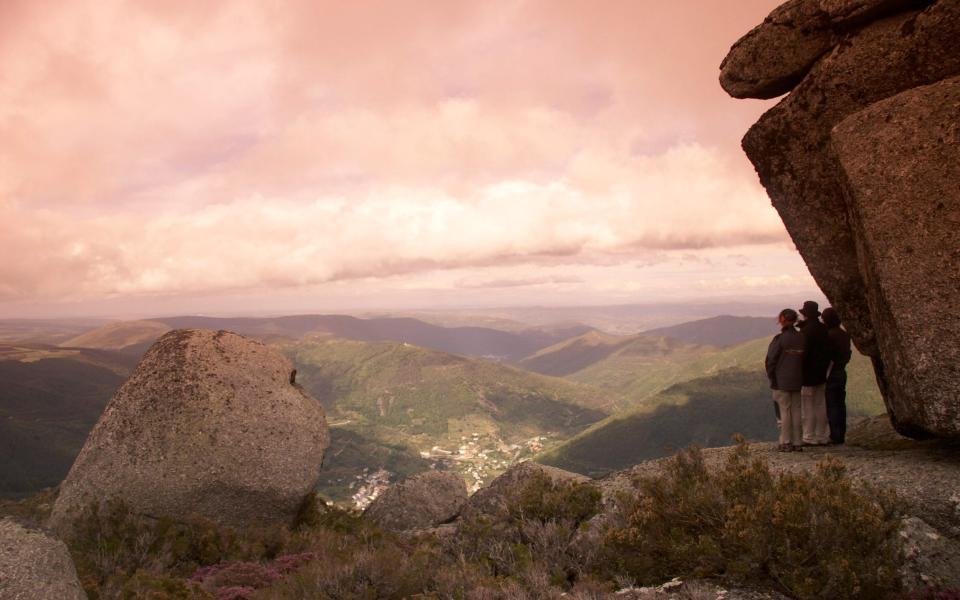
8. Island life
Porto Santo is the lesser-known little sister of Madeira. Its name, translated as blessed harbour, comes from 1418 when it provided the Portuguese navigators who had been blown off course from their exploration of the western coast of Africa with a safe haven.
The jewel in its crown is its golden beach, which at almost six miles long is said to have curative properties – mostly from the abundance of iodine, magnesium and calcium present in the waves that wash over them. The best time to visit is for the feast day of the island’s patron saint, St John, on June 23 and 24, which promises a hugely festive atmosphere. Once there, do not miss a visit to the 15th-century house – now a museum – of Christopher Columbus.
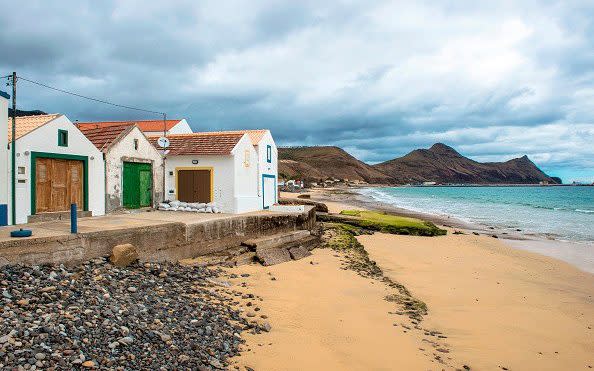
The Berlengas Islands off the mainland of Portugal make an enjoyable day trip on the ferry from Peniche harbour in summer. Inhabited since the Roman era by a succession of invaders, from Vikings to pirates, the islands have now been added to the World Network of Biosphere Reserves in order to protect the biodiversity of the archipelago. You can snorkel around the islands or visit the caves in glass-bottomed boats.
On Berlenga Grande, a visit to the 15th-century monastery (later repurposed as a 17th-century fort) of St John the Baptist is a must. Classified as a nature reserve, with numbers of rare bocage’s lizards, shearwaters and maritime crows, it is dominated by yellow-legged seagulls.
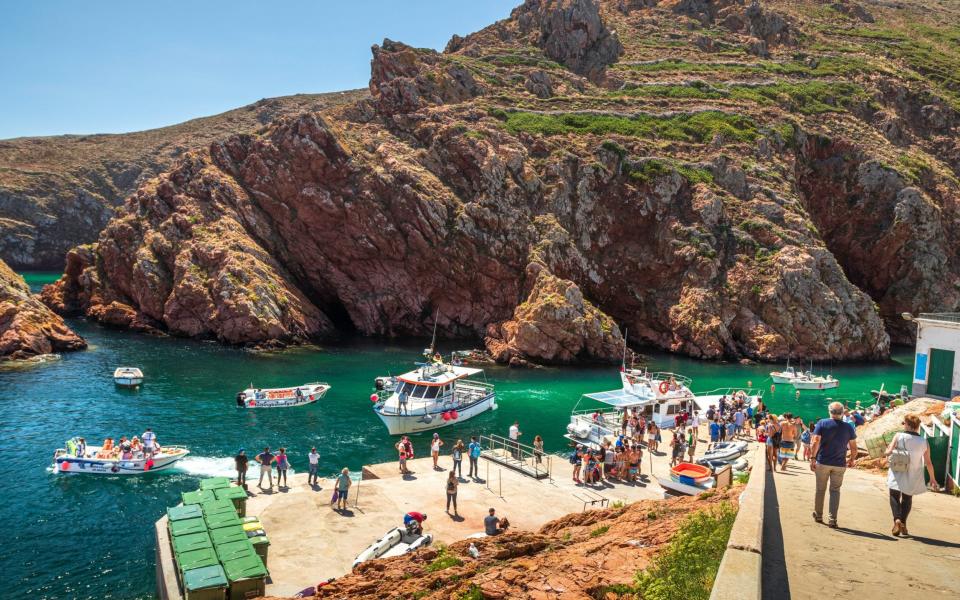
Last, but by no means least, is the uninhabited island of Ilha Deserta – otherwise known as Ilha Barreta, one of the five islands in the Ria Formosa. Reached by boat from Faro it provides a real Robinson Crusoe experience. Sadly, the only building on the island – an excellent restaurant, Estamine, famed for its seafood – burnt down just a few weeks ago, so rebuilding is currently under way. The best way to explore this particularly beautiful island? By catamaran tour (saltsea.pt), with the famous sunset here making a perfect end to the day.
Take the easy road
A number of companies offer ready-made packages in Portugal, so you don’t have to do any of the work.
Abercrombie & Kent’s six-night Classic Portugal is simple yet comprehensive. From £1,999pp (012 4238 6465; abercrombiekent.co.uk).
Take a seven-night botanical break on Madeira with Sunvil. Departs May 29; from £1,459pp (020 8758 4722; sunvil.co.uk).
Make the most of Portugal’s amazing local produce with a six-night Wine & Dine Northern Portugal fly-drive holiday from Trailfinders. From £779pp (020 7938 0210; trailfinders.com).
Cruise the Douro with Viking River Cruises on their 10-day Portugal’s River of Gold journey. Departs May 31; from £2,945 (080 0319 6660; vikingrivercruises.co.uk).
Embark on a six-night Spotlight on the Azores group tour with Cox & Kings. Departs June; from £1,695pp (020 3797 8070; coxandkings.co.uk).
For more ideas on where to stay, read our complete guides to the best hotels on the Azores, the best hotels in Douro, and the best hotels in Lisbon.
Travel warning
There are travel restrictions in force throughout the UK governing trips both within the country and abroad. For more information, see gov.uk/coronavirus; gov.scot/coronavirus-covid-19; gov.wales/coronavirus.
For more information and advice on holiday bookings during the pandemic, see telegraph.co.uk/ tt-covidtravel

